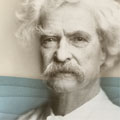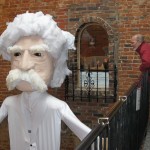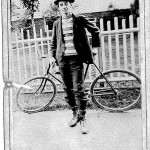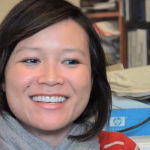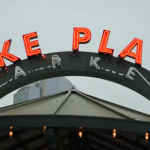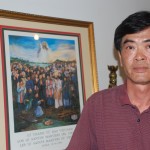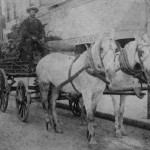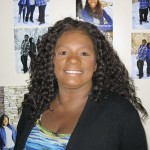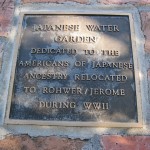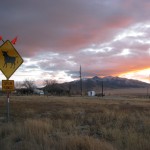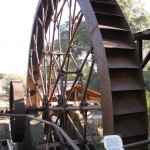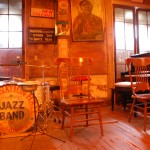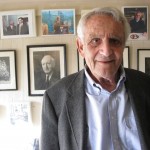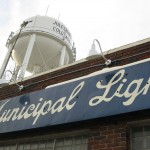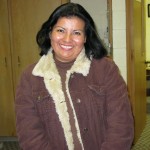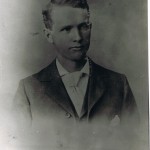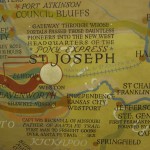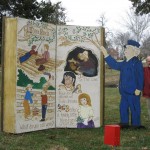On the fortieth anniversary of the Fall of Saigon, Vietnamese immigrants and their children gathered alongside Vietnam War veterans to reflect on the dramatic events that forever changed both of their destinies—the siege of South Vietnam’s capital, the evacuation of American soldiers returning home from intractable defeat, the Southeast Asian boat people fleeing communist takeover. In the Vietnamese diaspora, it’s referred to as Ngày Mất Nước, the day we lost our country.
But in New Orleans, the Vietnamese community commemorated forty years since April 30, 1975 a little differently.
“Everywhere else, they were mourning,” said Giuseppe Anthony Tran. “Here, we celebrated forty years of success.”
To hear Tran describe his experiences during those forty years is to witness breathtaking resilience, moxie, and a shining humor wholly unexpected given the circumstances. The combination has worked out quite nicely for the Vietnamese man with an Italian name. It’s kept him alive. It’s taken him from one delta to another, from fields of jasmine rice to fields of Jazzmen rice, a local variety of the aromatic grain that’s advertised as music for your mouth. “It tastes better than jasmine,” Tran said with a laugh.
He was born in the Year of the Dragon, 1964, to a family of rice farmers in Hà Tiên, a beach town at the southernmost tip of Vietnam.
During his childhood, an unexploded shell jutted out from the ground right in front of his house. Every day, the little boy, then known as Toan (Vietnamese for “safe, secure”), would touch the shell with wonder.
Tran didn’t know it would explode one day. “The war became something that was familiar to the people. To the point that we weren’t scared as much.” The soundtrack of “the bombing and the guns and everything” accompanied Tran’s entire childhood spent in wartime, until April 30, 1975, when a tenuous peace was reached.
At the age of 16, like a Vietnamese Huckleberry Finn, Tran decided to flee the country on a raft with eleven other young Vietnamese—total strangers, most of them teenagers. “My mom saved a lot to put me on board,” Tran said, “I would say equivalent to 400 dollars. That’s a lot in Vietnam in the 80s! We were poor as any other citizen.”
He was the youngest of seven siblings, just two years shy of military age. He would either leave the country now, or never have the chance again. “Living under the communists, you get the feeling that you don’t have another day to live,” he said. “Everything is controlled. That’s why I told my parents, I don’t see any future here.”
He left on the night of April 30, 1981, while the communists were celebrating six years since the end of the war.
“Officials and police and everyone in office were getting drunk and having a party. I used that moment to escape on a raft,” Tran said. He didn’t know whether he would ever see his mother again.
The plan was for the tiny, 25-foot raft to transport more than a hundred people to a bigger boat. Docking at the mouth of the Mekong River, a vital channel the color of caramel, they waited for the bigger boat to come and take the passengers away from Vietnam. But no boat ever showed up. As night gathered, so did a crowd of eager escapees. Finally, the twelve pulled anchor and left on the raft.
Tran saw many people pull up in smaller vessels to get onto theirs. “If we waited another second, we would have been overloaded with people,” Tran said. “The minute we started the engine, it made so much damn noise. Like a lawn mower. Officials heard it and started firing at us. On that night, the 30th, we left with eight big holes in the raft. We had to plug the holes with our shirts.”
Tran prayed that the raft would float in one direction: away.
It was everyone’s first time at sea. No one knew how to properly maneuver the raft. There was no compass, no map.
By night, they faced heavy storms. By day, the sun fried their skin into “rice paper,” Tran recalled.
Once in a while, they would see a boat in the distance, but the engine wasn’t strong enough to take them there in time.
Four times, Tran said, Thai pirates came, seeking women and valuables. A little girl, eleven or twelve years old as Tran remembers, was on board the raft. When the pirates first came, Tran knew they would be after her.
“To protect her, I took a big can of engine oil and dumped it on her,” Tran said. “She looked really filthy and so when the pirates looked at her, they said, ‘Just forget it.’”
He started fantasizing about land. “After a day or two on the vast ocean, you don’t see anything but the blue sky and the water. And the waves were so huge, you didn’t think you were going to survive,” he said. A devout Roman Catholic, Tran began reciting the last rites each night before sleeping.
Finally, early on the morning of May 5, 1981, their fifth day at sea, Tran saw a seagull in the open sky. He knew from his childhood spent by the sea that when you see birds, land is near. “I have never experienced that happiness when you see birds on the ocean. It was so wonderful.”
Eventually, they landed at the border between Malaysia and Thailand. Although it was a poor village in the province of Narathiwat, it was not Vietnam.
For a month and a half, the twelve combed the beaches, caught any game they could find, begged villagers for food, and climbed fruit trees that Tran said were “high as hell, man! They took hours to climb.”
Once word spread that a group of Vietnamese refugees had arrived in the village, the government of Thailand took them in, placing the group in the Songkhla Refugee Camp. At this point, Tran had no shirt, no shoes, and no money.
UNICEF sheltered the tens of thousands of refugees at Songhkla and supplied them with barely enough food and water. Tran started craving meat and certain comfort foods.
“When you’re hungry, you come up with all sorts of crazy ideas. I dreamed that one day I would fry an egg as big as a blanket,” Tran said. “I would cover myself up and eat at the same time.”
Tran volunteered to work for the UNICEF office. One day when he was cleaning up, he found a magazine.
“I was so happy,” Tran said. “So I grabbed it. Actually I stole it.” In his hands, Tran held an older edition of a Vietnamese magazine from New Orleans.
Tran took the magazine back to his tent to show his friends. As he flipped through the pages, he happened upon the name of his older brother, Tuong, an ordained priest, who had fled Vietnam for the U.S. in 1975. Tran hadn’t heard from him in more than six years. As he held the magazine in his hands, Tran learned that his brother, Tuong Cao Tran, was the editor of Dân Chúa, which he had started in the late ‘70s to connect Vietnamese Catholics living in the U.S.
Not believing his luck (“Recognizing my own brother’s name in the magazine was like hitting a jackpot,” Tran said), he wanted to send his brother a letter, but he had no money for paper, stamps, or a telegram. “So I asked a priest for a small sheet of paper. I wrote, ‘Please help me’ and an address and that’s it.” The priest mailed the letter for him.
Within two months, Tran received a letter from his brother with a $20 bill enclosed. He learned that Tuong had served and helped settle the very first Vietnamese refugees to arrive in Louisiana. Tuong also assured Tran that he would contact their mother to let her know that her youngest son made it to safety.
“It was so huge,” Tran said. “My life started from there.” Wielding the American money with pride, Tran bought “a whole lot” of eggs. That night, for dinner, Tran fried all of the eggs but could eat only a quarter of them. “I couldn’t take it anymore, you know?” Tran laughed. “I choked on the eggs.”
After two years of statelessness, Tran immediately started making plans with his older brother to come to the United States. Tuong, however, was a priest, and wasn’t allowed to take in another person. He asked an Italian-American couple he knew through Catholic Charities to co-sponsor Tran.
Francisco Giovanni and his wife, Evelyn, who resided in Chicago, took Tran in, named him Giuseppe Anthony and put him through high school and college. “That’s why I’m in love with Italy,” Tran said. “I’m an Italian-Vietnamese living in America!”
“Coming to America was like a leap into heaven,” Tran said. Every day, in his new country, Tran took the bus to the library and borrowed an armload of books to read, even though he understood little at first. “Education is something that my parents and godparents wanted for me,” Tran said.
At first, learning English for Tran was the “most troublesome.” One day during his first winter, Tran took a walk around downtown Chicago. As he approached a pedestrian crossing, he couldn’t understand the “DON’T WALK” sign on the crosswalk signal. So he hopped on a bus and immediately asked to be dropped off as soon as the bus crossed the road. Looking back on that episode, Tran guessed that the bus driver probably “cursed me for such a stupid action.”
But he was determined. After Tran graduated from Brother Martin High School in 1984, he joined St. Joseph Seminary College in Covington, Louisiana, and earned degrees in philosophy and psychology. He moved on to Notre Dame Seminary in New Orleans and trained for the priesthood, which he would leave in order to focus on bringing his family over to the U.S. from Vietnam.
Tran eventually settled in Village de l’Est in New Orleans, a neighborhood known for its Vietnamese community. The river in the “Village of the East” is crowded with lily pads. The soupy air circulates languidly around the signs in Vietnamese for restaurants and grocery stores, attorneys and dentists, Catholic churches and Buddhist temples. Many of the men living there are fishermen or shrimpers by trade. In Village de l’Est, there’s the distinct feeling of quê hương. Homeland.
The immigrant population liked the area, because it so resembled the country they had left: the tight-knit community and the sub-tropical climate, the landforms and the faces, the familiar food and the language spoken.
“The unity is there,” Tran said. “It’s lovely.” He’s been to other Vietnamese communities in Texas and California, but nothing compared to Village de l’Est.
In 2000, Tony Tran went back to Vietnam for the first time in almost twenty years. His mission was to bring his mother back to Louisiana.
On the flight into Tan Son Nhat Airport, Tran noticed the yellow rooftops of Saigon. They looked rusty. The airport’s runway was overgrown with weeds. He found no attachment to the country of his birth.
“When the plane landed, my heart was pounding,” Tran said. “I didn’t know what was gonna happen next.”
He found out that every step to get to his mother was a paying process—bribe an official here, placate an officer there with cold, hard cash. Tran paid a couple authorities $200 each to accompany him on his mission. “They followed me like the FBI,” he said.
He had learned that his family now lived in Biên Hòa, just outside of Saigon. He walked into his mother’s house and surprised her. “It was quite an experience,” Tran recalled. “I’m glad that she didn’t faint!”
At the end of his one-week visit, Tran told his mother that he would do everything in his power to bring her over to the United States. And he did. In 2007, Tran went back to Vietnam again to bring back his father’s remains in a tiny basket that fit into his carry-on luggage.
At the time of the interview, his mother was 94 years old and lived in New Orleans’ West Bank and his father was buried there as well.
In 2005, Hurricane Katrina made landfall in New Orleans.
For the Vietnamese community that had gone through so many experiences of exodus and relocation—from north to south Vietnam, from Vietnam to refugee camps, from those camps to America—Katrina was yet another experience of moving from one place to another.
“The city was shut down,” Tran recalled. “This was not something that happened in Vietnam or in the refugee camps. It happened in New Orleans, in the United States of America.”
It took Tran 28 hours to reach Dallas, Texas from New Orleans. It’s a trip that normally takes eight hours.
As Tran told it, two weeks after the storm, the displaced Vietnamese “came right back and fixed their homes. We shoveled out the mud and picked up. Cleaned up. Came back strong.”
Tran served as the parish coordinator of the Mary Queen of Vietnam Church. He was a community leader and the assistant to Rev. Dominic Nghiem. His wife, whom he met in 1994 at the library, was a nurse. Together, they had two boys—Mark, a student at Loyola University, and Tri On (Vietnamese for “grateful”), a sophomore in high school.
As for his companions who fled Vietnam with him in 1981, Tran told me one lives in Norway, another in the Netherlands, and the rest live in the United States. The little girl is now a married woman living in California. She called Tran in 1992 and asked him if he remembered her.
There’s a plot of vacant land across the street from the Mary Queen of Vietnam Church in Village de l’Est. Tran said the church has just broken ground there to build a cultural center and recreational park on the 28 acres. If all goes according to plan, it will be completed by 2017 and serve as a gathering place for the more than 10,000 Vietnamese living in New Orleans.
Over a meal of Vietnamese food at Ba Mien Restaurant, Tran said, “With my life, I feel I had more than I wished for. Looking back on the journey, everything was a blessing all along.”
On Thanksgiving Day in 2011, Tran found out he had spleen cancer.
“Kind of ridiculous, huh?” he said.
For the first eight months, he underwent “all sorts of treatment, testing, radiation, chemo, medical examinations,” he said, “now I’m on pills.”
Tran said the cancer caused a terrible growth on his skin. “It felt like leprosy. I was so worried,” he said. His doctor told him she had never seen anything like it.
Despite, or maybe because of, his experiences, from war to escape, cancer to Katrina, Tran insisted to me that there is nothing to be afraid of, that there are all sorts of reasons to be happy.
“I try not to take everything seriously,” he said. “It’s a life-changing experience. I’m taking it easy with everything, while I still have another day to live. So what the heck, this is just a little cancer, huh?”
Video and text by Dan Q. Tham

